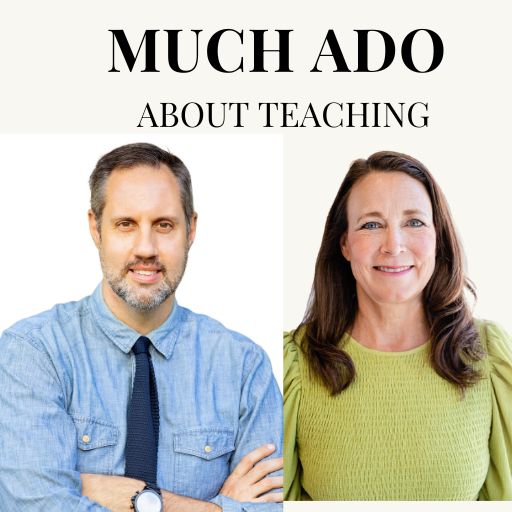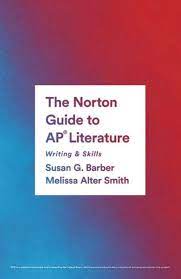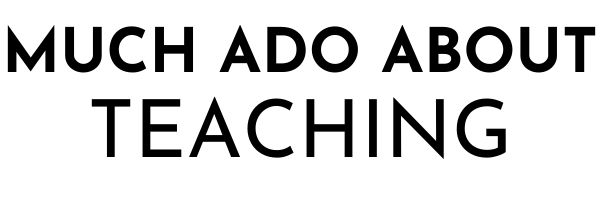Reflection 1 by Melissa Tucker
What did you notice in upper-half essays?
The “upper-half” were those student writers who were able to demonstrate a nuanced understanding of the passage. Those writers easily earned the thesis point and began at a 3 in row B (evidence and commentary). Often, those essays also earned the sophistication point. These writers unpacked their thinking about what community means and how the author developed that idea. For example, there were a few writers who explained how the differing opinions were necessary for the community. Others recognized how and why opinions shifted and, in some cases, conformed. One unique writer even explained how the octopus’s behavior was not natural but rather a projection of the community itself.
What did you notice in lower-half essays?
The “lower-half” essays often focused on concrete and/or disparate details within the passage. They relied too heavily on repeating the prompt and adding devices to create a thesis, rather than developing their argument. Although some were able to demonstrate enough analysis to earn a 3 in row B, more often they focused on summarizing the passage. In addition, many of the lower half of the essays seemed to create literary elements or device names. It was difficult to understand what they were analyzing because they focused more on the label and less on the impact that it had on the writing. Essays that focused on identification also relied on paraphrasing details. The connection and analysis was lost.
What makes for a strong line of reasoning?
The more effective writers had a clear understanding that this free response essay is a literary argument. Because of this, there was cohesion among their ideas (e.g. overarching thesis plus subordinate claims that expanded and developed that thesis). Rather than stack evidence and name-drop devices, students should be able to connect and build their thinking. When the evidence is the predominant part of the body paragraph, AP readers can no longer find the student’s thinking and argument.
Let’s talk sophistication . . .
This point still seems elusive for many. There were several students who could demonstrate control over grammar and mechanics, but “employing a style that is consistently vivid and persuasive” was harder to find. The essays that earned sophistication stood apart from the others because they focused on the implication of the author’s choices in order to develop the characterization of the community. Their line of reasoning consistently walked through THEIR argument about the writer’s choices rather than summarizing the writer’s choices. There also were a few who had very unique interpretations that situated “within a broader context.” In other words, the stronger essays that easily earned sophistication connected to historical or cultural concepts that the writer could have used as inspiration; a few essays successfully argued how the excerpt might situate within the longer text.
Any teaching points connected to what you learned at the reading?
One topic I want to discuss with my students is simplicity. Essays frequently used complicated thesis statements or a great deal of context. It’s as if the students may feel that concise wording or straightforward, simple claims were less effective. I hope to better understand why. Another impact on my instruction will be a return to explicit instruction literary element and technique terms. Too often essays claimed a device without proof, or they created a term that didn’t connect to literary elements or style. I feel that building their confidence with identification can lead to more effective explanations and connections. Finally, I’m going to create a matrix for the analytic rubric. As we often say, there are many rooms in the house of X. I plan to talk with my students about what qualities each row contains to develop clear and effective benchmarks for their writing. Creating a matrix that outlines the range of the characteristics that the 2-3-4 have in row B, as well as breaking down rows A and C, could help me provide feedback. More importantly, I hope that it provides a way for students to better articulate and evaluate their needs and wants in their writing conferences.

Melissa Tucker is a Secondary English teacher & coffee lover currently juggling mom life, grading, learning, reading, sewing, and life! She lives and teaches in Rock Hill, SC.
Reflection 2 by Matt Brisbin
Another year at the AP Lit reading has finally come to a close. I spent the past week scoring over 1,200 Q2 essays and while it was in many ways a very long week, I was so happy to see that this year’s students wrote some really fantastic essays and was pleasantly surprised to find how accessible the prose prompt was. I have to admit, after reading the prompt, I wasn’t sure how students would respond. My own students told me that after reading the excerpt, a passage from Linda Hogan’s 2008 novel People of the Whale, that they weren’t sure what direction to take their analysis and after comparing notes with their fellow test takers, many didn’t think they’d written about the right thing. However, what I found as I read through all these essays is that it was this flexibility that made the prompt so accessible to students. They didn’t have to write about the same thing in order to score well, but there were some commonalities in many of the upper-half essays that I’d like to share with you in hopes that it will help you and your students to feel more confident on next year’s exam.
The Thesis is the Key
This year, a vast majority of essays earned the thesis point. Granted, it doesn’t take much to qualify as a thesis on the rubric, but I do think this specific prompt opened the doorway to a wide variety of responses, and the key to unlocking the door to an upper-half essay was to earn that thesis point. The prompt asks students to analyze how the author develops a complex community, and based on our calibration and sample sets, all students needed to do to earn the point was to write any kind of insight about this community. This was often as simple as, “the people in this community had a difference of opinions.” Granted, this kind of response didn’t lead to the best essays, but it was enough to earn the point. This is important because although the thesis is only worth 1 point, the line of reasoning gives the essay a chance to earn a 3 or a 4 in row B. Without a thesis, it is very difficult to have a coherent line of reasoning. In the week that I scored essays, I never found an essay that earned better than a 2 on row B (or the sophistication point for that matter) that didn’t earn the thesis point. In the past, I’ve often taken for granted that my students know how to write good thesis statements. Since it seems so easy to earn the point, I’ve made the mistake of pointing it out, but then moving on. After this experience, I think that there are probably many students who don’t earn this easy to get point because they haven’t been taught what they need to do in order to check that box. Many students would attempt a thesis and just rephrase the prompt and others attempted a thesis that didn’t actually address the prompt at all. I still think it’s probably a simple enough lesson, but it is worth taking the extra time early in the year so that all students have a chance at scoring that upper-half essay.
Claims Give the Essay a Focus
This year on Q2 there were two organizational patterns that made up 95% of the essays that I read. Both organizational patterns could earn an upper-half score, but the commonality between these two types of essays is that the best ones began each paragraph with some sort of claim that had to be defended. The most common form of organization was by device. Students would often start a paragraph by writing something along the lines of, “the author uses imagery in order to show the complexity of this community.” Although this isn’t great analysis, it is a claim that must be supported with evidence, and it does give students the opportunity to write themselves into a stronger analysis. If a paragraph starts with a summary, there is simply nothing to support, and therefore it is much more difficult to stumble into deeper insight about the text.
The second most common type of organization was when students would work their way chronologically through the text from beginning to end. Between the two styles, these tended to score better. It allowed students to write with a builtin continuity that was often missing in the essays organized by literary device. As long as an essay had more than one claim and at least one of those claims was well supported with evidence and commentary, most students were able to score a 3 in row B of the rubric. If all the claims were supported, and there was a feeling of continuity that led to a better understanding of the thesis (i.e. a line of reasoning) most essays would score a 4 in row B. Most essays that only had one claim just didn’t have quite enough to earn an upper-half score. It felt like these essays were cut short (maybe because of time?) and were left a bit underdeveloped.
The biggest pitfall that I saw with a chronological organization is that students tended to fall into a summary rather than an analysis around a specific claim. It’s too easy to just fall back on giving an overview of the story, especially if students don’t take enough time to adequately plan what they want to say and just dive in because they feel like the clock is ticking. The more an essay summarized the excerpt, the less likely each body paragraph started with a claim. Essays that only summarized the passage without any sort of claim or thesis typically scored a 0-1-0.
Thinking About Comparisons
Like I said earlier, there were many different entry points into this text but in terms of the Big Ideas in the AP Literature Course and Exam Description (CED), the students who analyzed character, setting, and figurative language were the most successful on this prompt. I also noticed that the best thinking in each of these areas showed up when students were utilizing comparisons. This year, the prompt set students up to compare the various reactions that each of the community members had to the octopus walking out of the water. It was very clear that many teachers across the country had spent lots of time on stories and poems that utilized contrasting characters (CED skill 1.C).
Similarly, students were able to find many entry points in comparing how the setting of this ocean community revealed new insights about the characters and even the octopus itself (CED skill 2.C). Many students picked up on how practical the fishermen were because of their need to live off of what they catch and therefore it is understandable that they would want to use the octopus as bait. Others pointed out that because of the remote nature of the community the people had a tendency to fall into a group-think mentality when it came to what they should do about the octopus. Again, all great entry points into an analysis of the people in this story, but none of them were required in order to score an upper half essay. This flexibility resulted in the essays that I read scoring much higher as a whole than what I’ve seen in previous years scoring Q2.
Some of the more insightful essays picked up on the color symbolism and the biblical allusions in the text (CED skills 5.C and 6.D). By comparing the characters to these symbols or bible characters, students were able to discover many insights that very much helped in their analysis. Many essays picked up on the fact that the octopus turns a bright shade of red as it reaches the cave and that as it walks out of the water it pales as it notices all the people who were watching it. Some essays claimed that the octopus turning red was a sign of aggression and one of the biggest reasons the people in the community either wanted to kill it, or worship it out of fear. Other essays picked up on the white dress that Thomas’s mother was wearing and how it represented her pure intentions in sacrificing her father’s pearl (a treasure which came from the sea) and how this characterizes her as someone willing to put her faith in something bigger than herself.
The biblical allusions were varied and ranged from the octopus representing a christ figure who came from the ocean (like a baptism) and found its way into Seal Cave where the community started worshiping it (drawing a comparison to the resurrection of Jesus who was buried in a cave) to the four fishermen representing the four horsemen of the apocalypse which clearly explained their reasoning for wanting to kill the octopus and us it as bait. The best part, though, is that one interpretation didn’t necessarily lend itself to a better score than another. All of these symbols and allusions can work to reveal the complexity of the community. It was all a matter of where each particular student was able to find an entry point into their analysis.
Now What?
I think one of my biggest takeaways from the reading this year is that students really have so much flexibility with the direction they’d like to take their analysis. What is most important is that students are able to notice and dig into the things they feel they can write about.
With this in mind, I plan to start next year with lots of short stories and poems. I want to teach my students that there are as many different interpretations of a text as there are people in the classroom and what matters most are the details they notice and the inferences they start making about them. Each time we read a new story or a new poem, I’m going to have them write down and then talk about all the inferences they have; inferences about the characters and the setting, the narrator and the structure, and of course the figurative language they’re picking up on. I think a focus on this specific skill will lend itself nicely to creating solid claims that show their insights into the text. This will then lend itself to the conversations about organizing their essays and coming up with claims to support their thesis statements. I also like the idea of using lots of short texts to give them lots of practice at reading, noticing, and drawing conclusions about their inferences.
Something that I didn’t mention earlier is that the best essays (roughly 5% of all that I read) weren’t organized by device or chronologically. They were actually organized by each of the many insights that students had about the complex ocean community in the text. These were the essays that most often earned the sophistication point (for complex analysis). So, if I can start the year teaching students how to notice and draw conclusions about the little details, it will get easier as we do it more and more. This skill will lend itself to being able to write a much more in depth analysis of a text because it will have all the underlying insights that aren’t so obvious on an initial reading. Being intentional about teaching students how to have an insight into the text at the beginning of the year, will help them to start writing essays organized around these insights.
I know this will be much harder than it sounds once we put it into practice, but it is the hard work on the reading and thinking involved with reading and understanding a complex text that I’m hoping will be foundational to everything else that we do next year. I’m confident that if we can work through the struggles early on, the better readers and writers my students will become. And although this class isn’t all about the test, it will help them on next year’s exam too.

Matt Brisbin has taught English at McMinnville High School, in McMinnville, Oregon, for the last sixteen years and has taught AP Literature and Composition for the last ten years. He also works for the College Board as a consultant and reader for the AP Literature and Composition Exam. He is a co-author of the Instructor’s Guide to the high school edition of the 2019 Norton Literature Anthology. In his spare time, Matt enjoys reading, playing pickleball, and spending time with his kids, Hadley and Axel, and his wife, Erin.
Feature Image Photo by Kaya Patel on Unsplash












